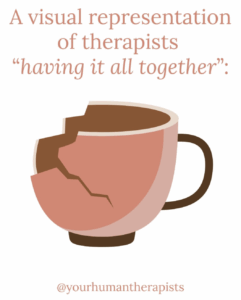The Ethics of Self-Disclosure in Therapy
“Patients are not responsible for their therapists’ emotional wellbeing. Any implication that they are should be viewed as a breach of professional ethics.”
— Nancy McWilliams
Therapists face a choice when it comes to self-disclosure. I lean toward openness. I’ve never been the blank-slate type.
Why? Three reasons stand out:
-
The therapists who helped me most disclosed. In my twenties, I sat across from clinicians who shared just enough of who they were. Those connections shaped me.
-
Clients stay engaged when I do. If I break the nod-and-smile routine and bring something real into the room, people perk up.
-
I stay engaged too. I wouldn’t last long in this job if I had to constantly neuter my reactions or hide my personality.
Of course, there’s risk. I’ve shared things that didn’t land. Probably more than I realize.
What Psychoanalysts Got Right
Old-school psychoanalysts had their reasons for restraint. Silence wasn’t evasion; it was technique. Say nothing, and the client’s mind fills the space. Their assumptions are clues.
When a client tells a therapist, “I feel like you think I’m boring,” and the therapist has never hinted at that? That’s gold. Their projection just opened a door. That’s why restraint matters: it invites the client’s unconscious to speak.
Newer clinicians often start with strong boundaries. That’s good. Over time, though, with experience and humility, it’s worth experimenting. Try sharing more. See what happens.
Why Timing Matters
When I level with a client at the right moment, things shift. The session sharpens. The relationship deepens. Both of us become more present.
But that happens in private. Behind closed doors. With a shared understanding of what therapy is. (If you’re interested more in how our team does therapy, you can read more here)
Which brings me to what’s happening online.
The Problem with Public Self-Disclosure
Lately, therapists on Instagram and TikTok have embraced public vulnerability. The intent is usually good: normalize imperfection, reduce stigma, fight burnout. But some of it misses the mark.
A lot of what I see isn’t thoughtful self-disclosure. It’s therapists processing their own trauma, exhaustion, and doubt — out loud, in front of clients and strangers.
That’s not clinical courage. That’s branding.
Container and Fluid
I often use the metaphor of container and fluid in my teaching. Each session, clients pour in fear, shame, confusion, memory, or truth. Sometimes it’s slow. Sometimes it’s torrential.
My job is to be the container: steady, solid, uncracked.
In my years, I’ve heard disclosures that would rattle anyone:
-
Assault, both experienced and committed
-
Betrayals of every kind
-
Stories from first responders about watching children die
And in those moments, clients don’t need me to be “relatable.” They need me to be steady.
When the Container Cracks
Recently, I came across an image on a therapist’s account promoting “radical transparency.” It showed a cracked container. Perfect metaphor — but not for what they intended.

If clients see their therapist as barely holding it together, how are they supposed to feel safe pouring themselves out? What message does that send about the integrity of the space?
Broadcasting your cracks doesn’t make therapy safer. It makes therapy less safe.
The Right Place for Struggle
This isn’t about demanding perfection. We all struggle. But supervision, consultation, or your own therapy is where those struggles belong — not on a Reel, not in front of clients.
We already know therapists are human. That’s not the point. The point is that therapy isn’t about us being seen. It’s about us seeing.
Keeping the Work Sacred
If you’re a client, you shouldn’t have to wonder if your therapist can handle your story. And if you do, bring it up — that’s part of the work.
If you’re a therapist chasing likes more than clarity, stop pretending it’s for the field. It’s not. It’s marketing your unprocessed pain.
This work is sacred. Let’s not turn it into spectacle.

